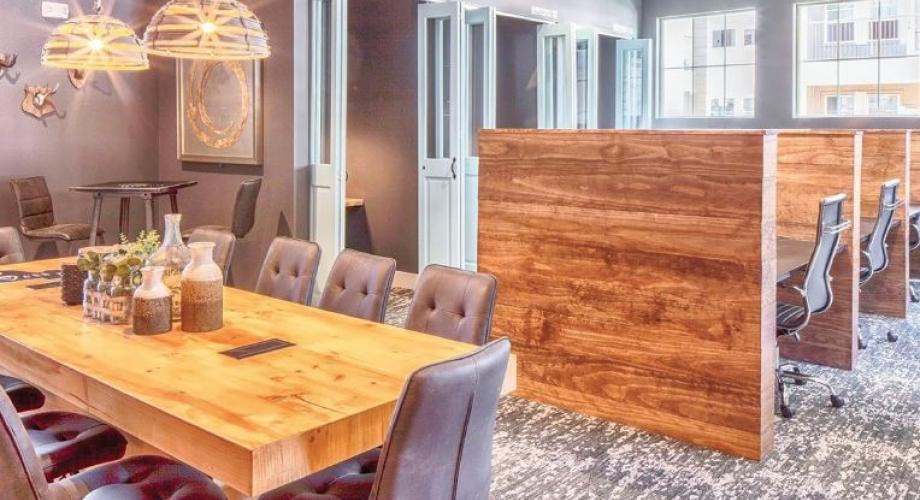By offering amenities that cater to basic needs and desires, apartment operators are taking steps to ensure resident satisfaction and retention.
If you want to appeal to residents, think about how you can make their lives better.
An informal sampling of some of the larger owners and operators in the industry reveals that the amenities they are most excited about are not just ultra-luxury touches.
Luxury still sells, as evidenced by Veranda Highpointe in Denver from Cardinal Group, which added a lazy river to its community pool (giving it the only amenity of this type in the market). However, apartment developers and operators are finding that conservation, wellness and especially convenience are as popular among residents.
“Finding ways to make our amenities available 24 hours a day and ‘on-demand’ for residents is becoming more important because the number of employees who are choosing to work remotely is increasing,” says Justin Marshall, Chief Operating Officer of Fogelman Properties.
Convenience
Fogelman is adding workspaces for the lease in communities such as The Ace in Round Rock, Texas. The company provides private booths as well as communal areas from which to work. These spaces are equipped with small conference rooms (which usually have projectors) and fiber Internet connections to increase bandwidth.
Marshall says this type of amenity allows Fogleman’s suburban communities to be more competitive with urban properties because residents aren’t as concerned about having to live near their downtown offices.
Other convenience amenities are the tried-and-true package delivery rooms, which allow residents to securely access their packages at any time; ride-share vestibules where residents can quickly and easily find their Uber and Lyft rides; and sundries pantries, which provide miscellaneous snacks and drinks at any hour.
“The idea is to replicate what a hotel has as a convenience to residents,” Marshall says. “By continuing to bring ‘urban’ conveniences to suburban locations, we become more competitive and the rent gap between urban and suburban locations can continue to narrow.”
Wellness
A generation ago, apartment gyms could be equipped with a treadmill, an elliptical and a couple of weights and be considered good enough to satisfy residents’ requirements.
That’s no longer the case. Today, apartment fitness centers, such as the one at Bainbridge South End from Bainbridge Cos., are designed with the same look and feel as well as with the same high-end equipment that is found at a commercial gym. These fitness centers often include private workout studios, spin bikes and on-site group fitness classes.
Fogelman offers an indoor climbing wall as part some of its fitness centers.
“It brings the outdoors to the indoors and offers the ‘cool’ factor for our residents because these walls are not commonly found in our marketplace,” Marshall says.
Enriching residents’ preferred healthy lifestyle goes beyond providing a place to workout. Gables has implemented Fitwel—a cost-effective, high-impact building certification standard that optimizes building occupant health and productivity through targeted improvements to workplace design and policies.
The program was developed by the General Services Administration (GSA) and the Centers for Disease Control and Prevention (CDC) and is administered by the Center for Active Design. When certifying a community, Gables is prioritizing wellness within the design, development, and operations of buildings for its employees, residents, investors and others.
Energy Efficiency
Saving energy might not be classified as a need, but it is a desired practice among many Millennial residents.
The Ashley Gables Buckhead, opening this October, is a 325-apartment community, in the heart of Buckhead Village, which offers residents the convenience of 24-hour concierge services and the ability to walk to the city’s most exclusive shopping, dining and entertainment venues.
The community’s most striking amenity might be its solar photovoltaic (PV) canopy over the dog park, which is designed to provide shade and shelter from the elements and generate energy. This solar array will produce electricity to power not only the dog park but also the Sky Lounge and all other rooftop amenities. The kilowatt value is estimated to offset electricity expenses by approximately $6,000 annually.
Supported by three Tesla Powerwall 2 batteries for energy storage, the system will provide the electricity needed to continuously power these amenities through the night. When the system produces more energy than what is needed or can be stored, it will distribute that power to electrify other common areas in the building.
